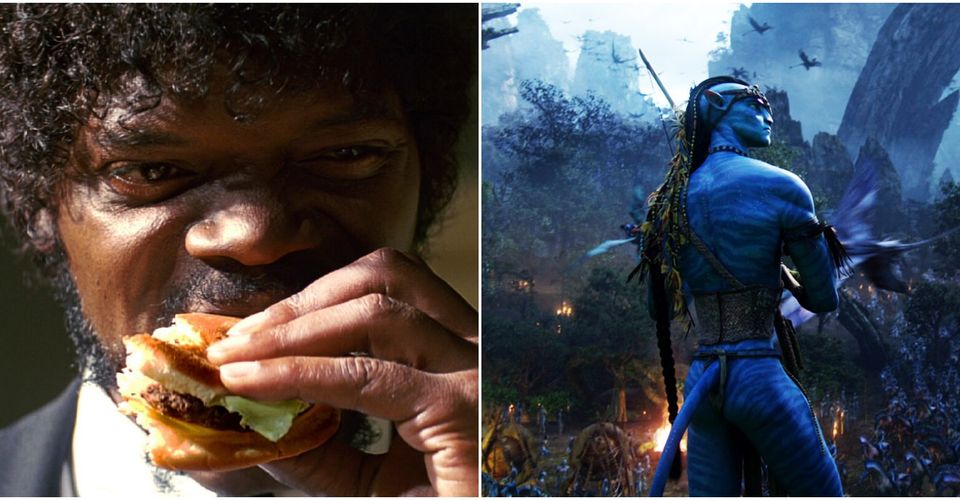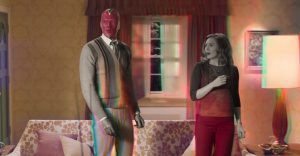Top 15 Hollywood Directors And Their Signature Styles

Watch enough movies and you’ll probably get too familiar with some of the filming techniques and styles used, especially if you like a particular director. Be it a liberal use of lens flares in a Star Trek reboot or a more liberal use of explosions in a film about a screamy Shia Labeouf and his talking Camaro, Hollywood directors are generally known for their trademarks.
If they’re brilliant enough, these styles can revolutionize the film industry. They tend to introduce new camera angles, narratives, transition effects, lighting, shot framing, etc. which have never been utilized before to full effect. 15 of them stand out for being legendary filmmakers in an environment rife with half-baked remakes and Fast and Furious. Here are Hollywood’s 15 irreplaceable silver screen treasures, in no particular order of hierarchy.
Updated October 1st, 2020 by George Chrysostomou: As the film industry continues to evolve it’s important to take note of the conflicting and inspiring styles that some of Hollywood’s most well-renowned directors are currently known for. This list has therefore been revisited to reflect some of the other talent currently defining modern cinema.
15 THE WACHOWSKIS

The Wachowskis may not have a huge filmography to their name, but when it comes to Hollywood they have significantly redefined how big blockbusters movies are shot and their relationship to visual effects.
Their work on The Matrix astounded audiences, and their other projects like Jupiter Ascending continued to garner respect in terms of breath-taking visual work. The garish science-fiction inspired cinematography of a Wachowski film is unlike anything else.
14 GUILLERMO DEL TORO

Guillermo Del Toro is easily one of the best directors of this generation. Taking high fantasy and science fiction concepts and bringing a human element to them, Del Toro’s work is also defined by its visuals, use of practical effects, and the human stories underneath these crazy fictitious elements.
From his earlier work on Hellboy, which helped to further inspire the superhero genre, to his large scale take on the Japanese classic style with Pacific Rim, Del Toro’s projects are always recognizable. His award winning and career-defining work on Shape of Water and Pan’s Labyrinth are also particularly notable gems within his filmography that encapsulate his signature touch splendidly.
13 PETER JACKSON

Peter Jackson has a very classical style in many senses. He is an extremely talented producer and director, having worked on a whole host of various genre pieces including Tintin, Mortal Engines, and They Shall Not Grow Old — his range is quite astounding. But naturally, his career-defining work in Hollywood is that of the Lord of the Rings franchise.
Jackson pushed the capabilities of technology at the time, using motion capture performances to form Gollum as CGI character in a pivotal, mainstay role. His reliance on practical effects and choosing to do as much as possible in-camera created a beautiful array of shots that will last an eternity.
12 TAIKA WAITITI

Taika Waititi has quickly amassed a large following and defined his work by a quirky and zany quality that very few can even attempt to replicate. With fast moving and witty dialogue punctuating his distinct brand of visual humor, Waititi’s work is very much recognizable as his own.
The New Zealand sense of humor is so very observable, and its link to heart-warming human narratives is what really makes Waititi’s work tick. From big blockbusters like Thor: Ragnarok, to smaller more personal experiences such as Hunt For The Wilderpeople and even to completely original mockumentaries like What We Do In The Shadows, his style is clear.
11 ALFONSO CUARÒN

Alfonso Cuarón has quietly built a cinematic style that is both visually stunning and incredibly competent when it comes to storytelling. It’s a style of filmmaking that’s built on the idea of “narrative first.” This was defined early in his career by coming of age stories.
Cuarón’s work on Y Tu Mamá También showcased his way of portraying a younger generation. This work helped to redefine the Harry Potter franchise with Prisoner of Azkaban. Since then, even throughout a visual spectacle in Gravity or a far more personal tale like Roma, he has demonstrated a commitment to a style that shows the audience the most important aspects of the story.
10 QUENTIN TARANTINO

You’ll not find a more spontaneous director than Quentin Tarantino in this list or in Hollywood. His particular film trademark? Anything goes– even the most absurd and unconventional narrative twists. While Tarantino’s most noticeable quirk is the overt and comedic violence, his more subtle yet powerful symbolisms come in the form of… food.
Often, Tarantino uses food in scenes to represent power or to accompany a display of one. From the White Cake in Django Unchained to the cheeseburger in Pulp Fiction, it’s an odd yet assertive association. Even this was present in Tarantino’s most recent outing, Once Upon a Time in Hollywood; that should be a given since a hungry Brad Pitt is part of the film.
9 STEPHEN SPIELBERG

Have you ever seen a dramatic facial zoom-in for the main character too many times in the most dramatic moments of the film? Chances are, you’ve been watching too many Steven Spielberg films. You see, Spielberg loves to convey the emotional weight of the scene with a moderately slow facial close-up.
It doesn’t matter whether the film is about a lovable MiA alien or Tom Hanks looking for an MiA Matt Damon in France. After all, Spielberg chooses his actors well and this kind of emotional close-up technique will only work if the actor/actress knows how to emote.
8 JAMES CAMERON

James Cameron is the director Michael Bay wishes he was. The man knows how to handle spectacles whether with digital or physical props. Pair the set pieces with the most unlikely love story ever or a strong female lead, and you get the full Cameron package. The cost, however, is a little too monumental; Cameron often has to allot hundreds of millions of dollars, because why not? Box office returns are worth it.
Such is the case for James Cameron’s biggest hits. Back in the 1990s it was Titanic. Enter a new decade and James Cameron tops his own Titanic record with Avatar. Goodness knows what new milestone Avatar 2 will reach. If anything, Cameron always goes big on everything.
7 MARTIN SCORSESE

Long tracking shots can be difficult from both a technical and artistic standpoint. It basically requires everything to be perfect in one take, otherwise, you start all over again. Still, Martin Scorsese does not shy away from such a bold film shot. Scorsese likes to follow his characters’ movements in one-long continuous tracking shot.
The effect? We get a much more personalized scale of the character and the world he’s interacting with. Also, take note of the New York accent and atmosphere, the DiCaprio, and the Rolling Stones music in case you’re in doubt whether what you’re watching is a Scorsese film or not.
6 M. NIGHT SHYAMALAN

Often it’s difficult for a film to have more substantial twists than the pretzel you’re snacking on during movie time. Even so, M. Night Shyamalan manages to pull it off in several of his films. He has blindsided the audience so flawlessly over the years that his name has become synonymous with plot twists.
Shyamalan has had recent plot twist outings in the form of Split or Glass, but his most stupefying reveal ever came in the form of Bruce Willis’ realization that he’s dead in The Sixth Sense. Other than that, he’s also famous for having a cameo role in his films and color symbolisms. It’s too bad he didn’t use those to salvage what was left of The Last Airbender.
5 TIM BURTON

Here we go. The patron saint of emos and Goths, Tim Burton. All his films either include a deranged Johnny Depp or a color grading so dark and depressing, it will make you want to listen to My Chemical Romance. Also, Tim Burton might be colorblind to anything but white, black, and red. This gives his films a foreboding yet surprisingly charming atmosphere.
That’s not a bad thing, of course. On the contrary, this unique style makes every Burton film worth anticipating, even though you probably know it will involve corpses, or tragic love stories, maybe Helena Bonham-Cater, half the time.
4 CHRISTOPHER NOLAN

Do most of the movies you watch confuse you to hell and back (not necessarily in that order)? You might want to give your brain a breather and lay off the Christopher Nolan flicks. Each of them on their own is like solving a 10-sided Rubik’s cube. That’s because Nolan likes his non-linear storytelling more than he likes your understanding of the narrative.
This is at it’s most confounding in Memento where the protagonist literally suffers from short-term memory loss. Meanwhile films like Inception, Dunkirk (because of the storytelling structure), and Interstellar can also jam your grey matter in a knot. Hey, it’s a pretty good mental exercise.
3 ALFRED HITCHCOCK

Horror and thriller filmmakers owe plenty to Alfred Hitchcock– he’s often branded as a master of suspense in cinema. Such a title for the deceased director was cemented first after Psycho‘s popularity. Much of the suspense is due to how Hitchcock utilizes the camera angles. He positions them to make it appear that the audience is viewing the film through the characters’ eyes.
Also, more often than not, Hitchcock has a weak spot for blondes; he often casts them as the female leads in his films, though not necessarily as strong and independent characters. It was a different time back then.
2 STANLEY KUBRICK

There are many aspects you can study in Kubrick’s films and a short segment in a list article would probably not do justice to his filmmaking prowess. Anyway, you’ll know a Kubrick film when you see one. His characters are devoid of morality, his camera angles change rapidly from general to personal (and back), and last but not least, the infamous Kubrick stare.
The character (usually male) tilts his head down, looks up beneath the eyebrows, smiles maniacally, and stares at the camera lingeringly. This is to signify that their screws have loosened. Beyond that, always prepare for a nihilistic ending in a Kubrick film.
1 WES ANDERSON

Have you ever met a film elitist who frowns at you with scorn every time you say ‘movie’ instead of ‘film?’ That person’s favorite choice of movies – sorry, films – is most likely Wes Anderson’s collection. Every frame in a Wes Anderson film is art. Every shot is symmetrical from character placement to scene compositions. So basically, every time Wes Anderson makes a movie, he takes hundreds of thousands of pieces of symmetrical photographs.
Most shots are also wide-angled and every other character has some form of fancy facial hair. The plot, while slow, is accompanied by pleasant music and odd humor. It’s enough to stimulate every nerve in a film major’s hypothalamus, and we all love Wes Anderson for it.
About The Author

















